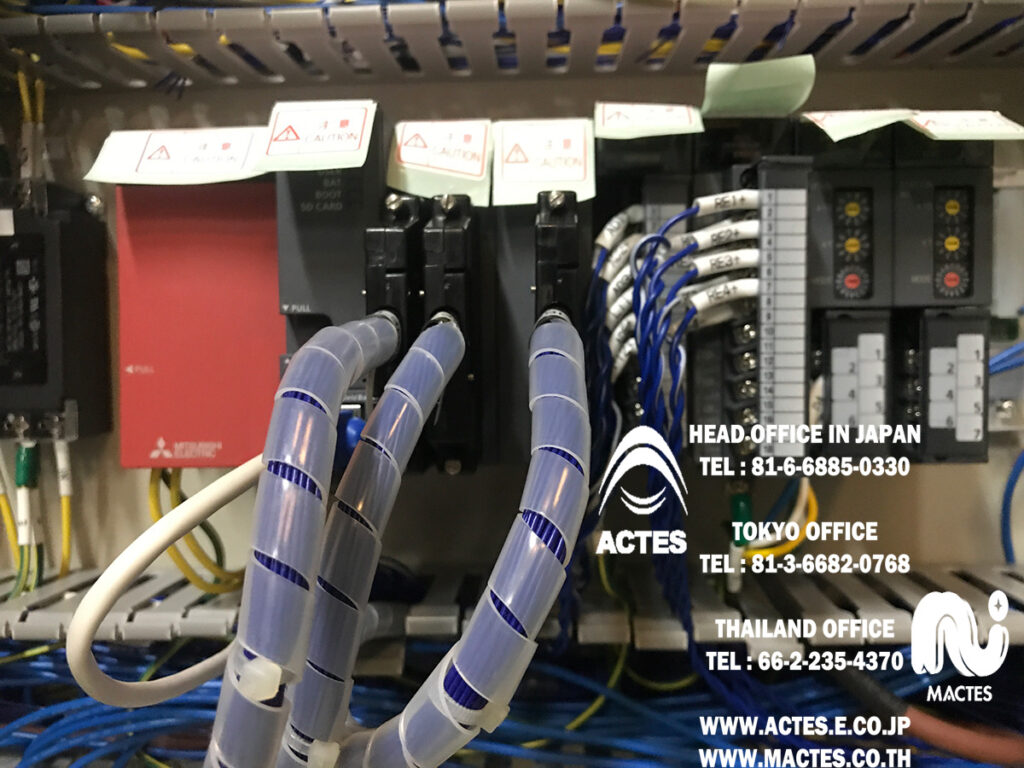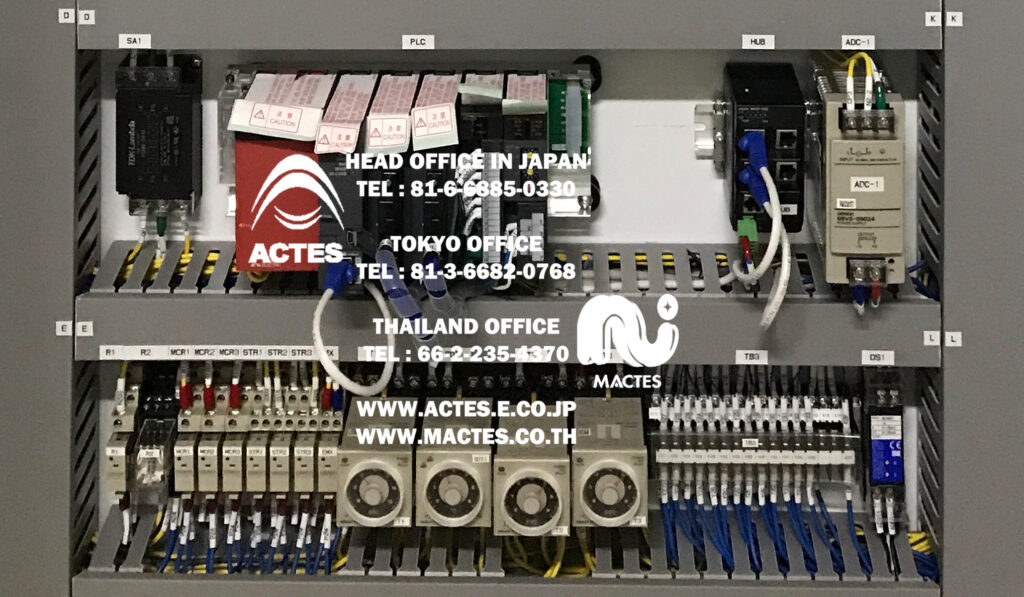LCP (Local Control Panel) คืออะไร?
LCP (Local Control Panel) คือ ตู้ควบคุมท้องถิ่นหรือแผงควบคุมเฉพาะจุด ใช้ในการควบคุมและตรวจสอบการทำงานของอุปกรณ์ต่างๆ ในบริเวณที่ติดตั้ง เช่น มอเตอร์ ปั๊มน้ำ ระบบระบายอากาศ หรือเครื่องจักรในโรงงานอุตสาหกรรม
ส่วนประกอบของ LCP
1.อุปกรณ์แสดงผล (Display Devices)
- ไฟแสดงสถานะ (Indicator Lights): บอกสถานะเปิด-ปิด ทำงานผิดปกติ หรือแจ้งเตือน
- มาตรวัด (Meters): วัดค่าแรงดัน กระแสไฟฟ้า อุณหภูมิ หรือความดัน
- หน้าจอ HMI (Human Machine Interface): แสดงข้อมูลการทำงานแบบกราฟิกและสามารถสั่งงานได้
2.อุปกรณ์ควบคุม (Control Devices)
- ปุ่มกด (Push Buttons): สั่งการเปิด-ปิด หรือสลับโหมดการทำงาน
- สวิตช์ (Switches): เช่น Selector Switch สำหรับเลือกโหมดการทำงาน
- คอนแทกเตอร์ (Contactors) และรีเลย์ (Relays): สั่งงานเปิด-ปิดอุปกรณ์
3.อุปกรณ์ป้องกัน (Protection Devices)
- เบรกเกอร์ (Circuit Breakers): ป้องกันกระแสเกินและการลัดวงจร
- ฟิวส์ (Fuses): ป้องกันอุปกรณ์ในกรณีมีกระแสเกิน
- รีเลย์ป้องกัน (Protective Relays): ป้องกันความเสียหายจากการทำงานผิดปกติ
การทำงานของ LCP
- การควบคุมในพื้นที่หน้างาน (Local Control): ควบคุมอุปกรณ์ในพื้นที่ เช่น การเปิด-ปิดมอเตอร์ หรือปั๊มน้ำ
- การควบคุมระยะไกล (Remote Control): หากเชื่อมต่อกับระบบ SCADA หรือ PLC จะสามารถควบคุมจากระยะไกลได้
- การตรวจสอบและวิเคราะห์: อ่านค่าต่างๆ เช่น แรงดันไฟฟ้า กระแสไฟฟ้า อุณหภูมิ เพื่อตรวจสอบความผิดปกติ
- การป้องกันและรักษาความปลอดภัย: ตัดการทำงานอัตโนมัติเมื่อเกิดเหตุการณ์ไม่ปกติ เช่น กระแสเกิน แรงดันตก
ประเภทของ LCP ตามการใช้งาน
1.LCP สำหรับงานไฟฟ้า (Electrical LCP): ควบคุมการทำงานของมอเตอร์ ปั๊มน้ำ หรือเครื่องกำเนิดไฟฟ้า
2.LCP สำหรับงานเครื่องกล (Mechanical LCP): ควบคุมการทำงานของเครื่องจักรหรืออุปกรณ์ที่ต้องการการวัดผลเฉพาะด้าน
3.LCP สำหรับงานกระบวนการผลิต (Process Control LCP): ควบคุมกระบวนการผลิต เช่น การควบคุมอุณหภูมิและความดันในกระบวนการอุตสาหกรรม
ข้อดีของ LCP
- เพิ่มความปลอดภัยและลดความเสี่ยงในการทำงาน
- ลดความผิดพลาดจากการควบคุมด้วยมือ
- เพิ่มความสะดวกในการตรวจสอบและบำรุงรักษา
- สามารถปรับแต่งได้ตามความต้องการของหน้างาน
ข้อควรระวังในการใช้งาน LCP
- ควรตรวจสอบการเดินสายและการติดตั้งให้ถูกต้อง
- บำรุงรักษาและตรวจสอบสถานะการทำงานอย่างสม่ำเสมอ
- เลือกใช้ LCP ที่มีมาตรฐานและเหมาะสมกับการใช้งาน
- ระวังการตั้งค่าที่ผิดพลาดซึ่งอาจก่อให้เกิดความเสียหายต่อระบบได้
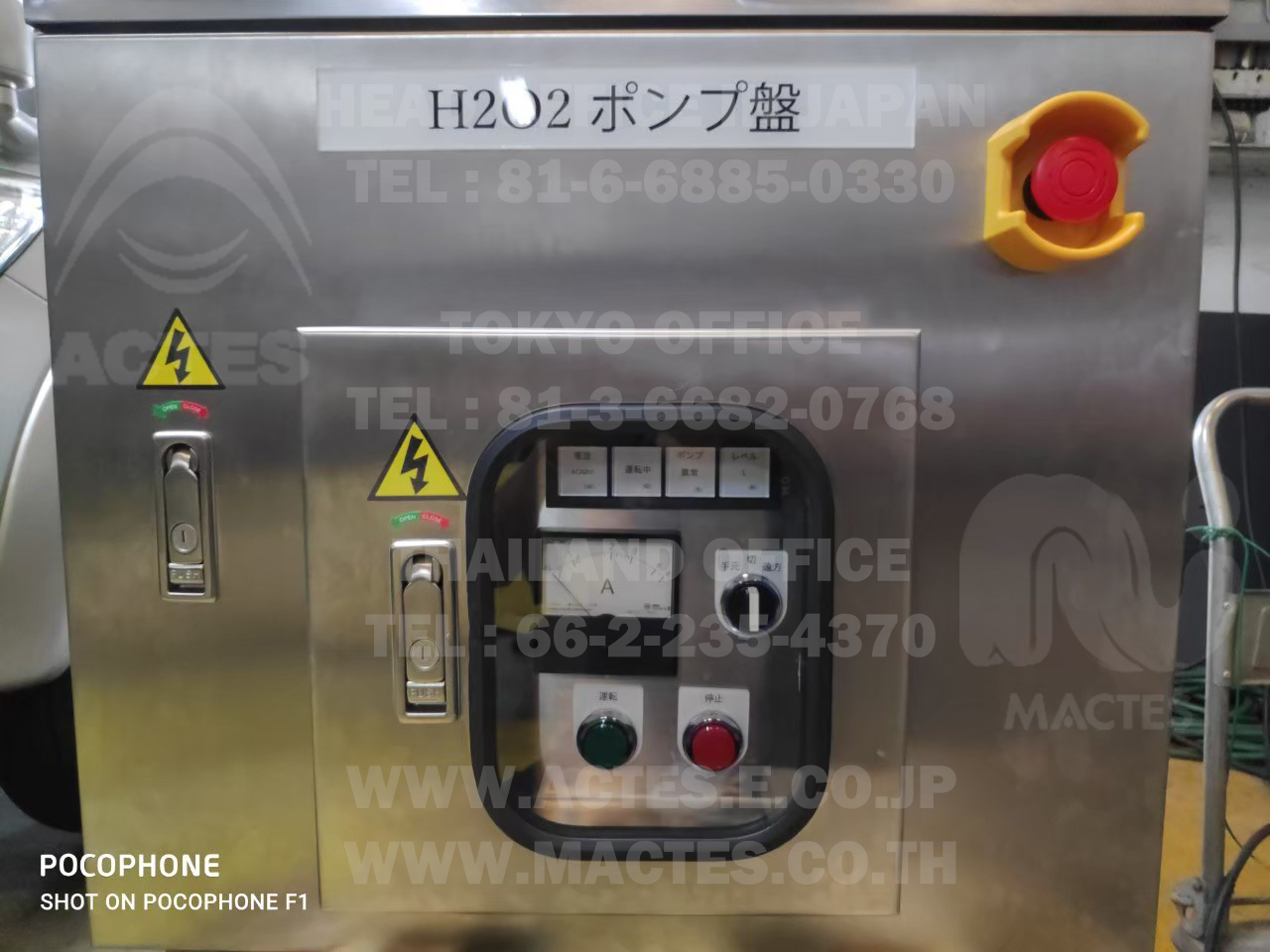
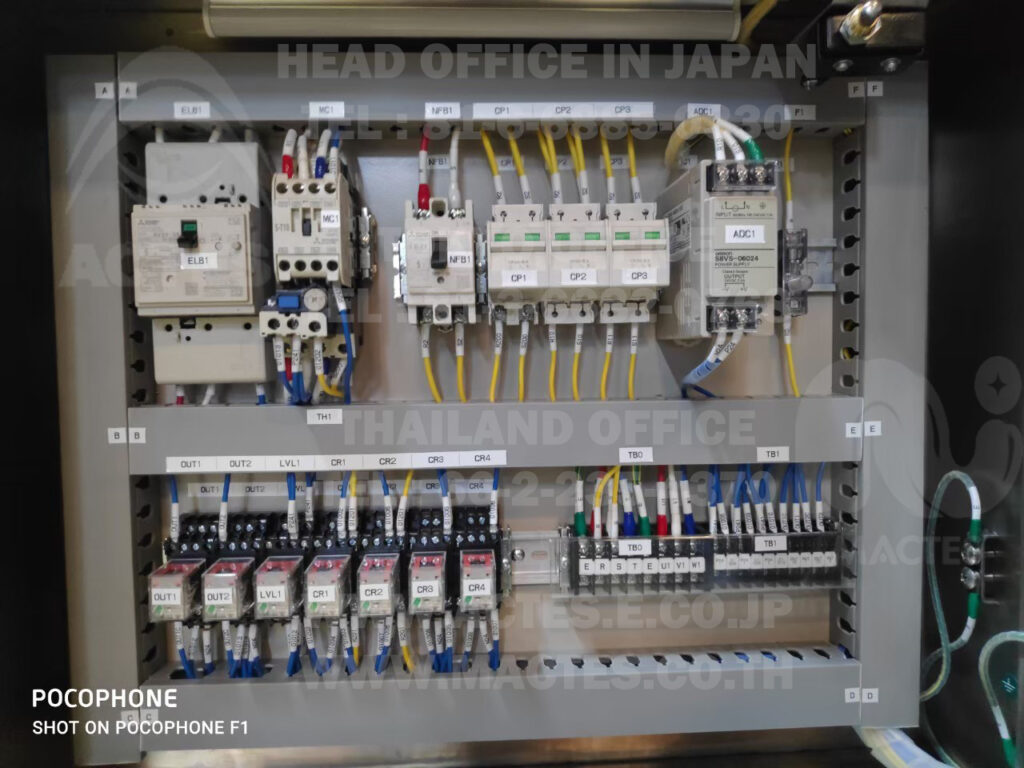
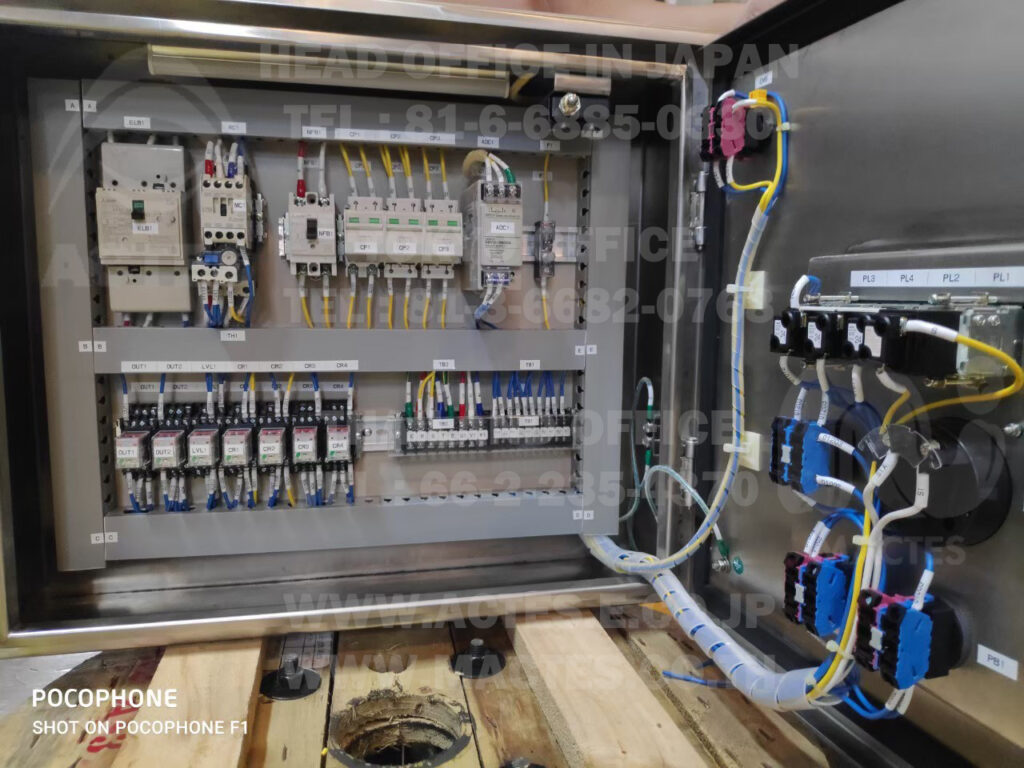
What is LCP (Local Control Panel)?
LCP (Local Control Panel) is a localized control cabinet or a specific control panel used to operate and monitor various equipment in the installation area, such as motors, pumps, ventilation systems, or machinery in industrial plants.
Components of LCP
1.Display Devices:
- Indicator Lights: Show operational status, such as on/off, malfunction, or alarms.
- Meters: Measure voltage, current, temperature, or pressure.
- HMI (Human Machine Interface): Displays graphical information and allows user control.
2.Control Devices:
- Push Buttons: Used for start, stop, and mode selection.
- Switches: Such as selector switches for mode selection.
- Contactors and Relays: Used to control on/off operations of equipment.
3.Protection Devices:
- Circuit Breakers: Protect against overcurrent and short circuits.
- Fuses: Provide overcurrent protection for devices.
- Protective Relays: Prevent damage from abnormal operations.
How LCP Works
- Local Control: Operates equipment in the field, such as turning motors or pumps on/off.
- Remote Control: If connected to SCADA or PLC systems, it can be controlled remotely.
- Monitoring and Analysis: Reads various values like voltage, current, and temperature for diagnostic purposes.
- Protection and Safety: Automatically shuts down in case of irregularities like overcurrent or voltage drop.
Types of LCP Based on Application
1.Electrical LCP: Controls motors, pumps, and generators.
2.Mechanical LCP: Manages machinery or equipment requiring specific monitoring.
3.Process Control LCP: Regulates production processes like temperature and pressure in industrial systems.
Advantages of LCP
- Enhances safety and reduces operational risks.
- Minimizes human error in manual control.
- Eases monitoring, maintenance, and troubleshooting.
- Customizable for specific on-site requirements.
Precautions When Using LCP
- Ensure proper wiring and installation.
- Regularly inspect and maintain operational status.
- Choose LCPs that meet relevant standards and are suitable for the application.
- Be cautious with incorrect configurations that may damage the system.
Contact :
Tel,
02-235-4370(THAI)
81-6-6885-0330(JAPAN)
E-Mail,
mactes1_thailand@hotmail.com(THAI)
sadao.matsui1@actes-e.co.jp(JAPAN)

